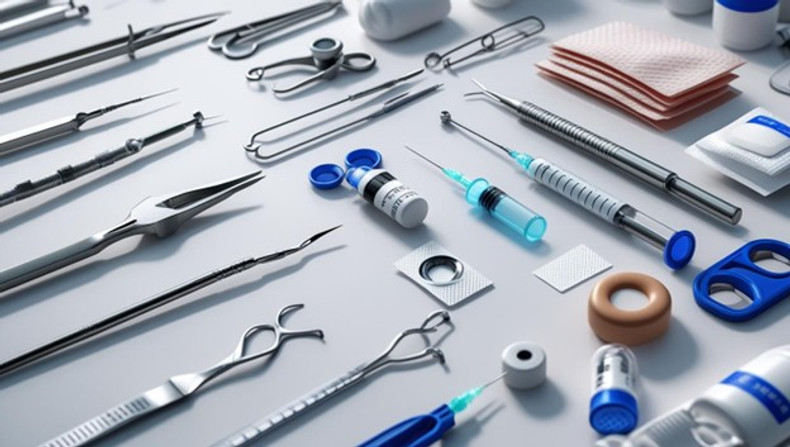The healthcare industry relies heavily on medical equipment to deliver quality patient care. From diagnostic machines and surgical instruments to personal protective equipment (PPE) and life-support systems, the seamless availability of these tools is critical. However, the process of supplying medical equipment is complex, influenced by a myriad of factors that medical equipment suppliers in the USA navigate daily. Understanding these complexities offers insight into the challenges and innovations shaping the future of healthcare supply chains.
-
Regulatory Compliance and Standards
One of the most significant factors contributing to the complexity of medical equipment supply is the stringent regulatory environment. Medical equipment must meet rigorous safety and quality standards set by organizations such as the Food and Drug Administration (FDA) in the USA. Compliance involves thorough testing, certification, and documentation, which can be time-consuming and costly.
Medical equipment suppliers in the USA must stay updated with ever-evolving regulations. Any changes in compliance requirements, such as new safety protocols or updated technical standards, can disrupt supply chains. Moreover, navigating different regulations when importing or exporting equipment adds another layer of complexity.
-
Global Supply Chain Dependencies
Medical equipment supply chains are often global, with components sourced from multiple countries. This international dependency makes the supply chain vulnerable to disruptions caused by geopolitical tensions, natural disasters, pandemics, and shifts in trade policies. For example, the COVID-19 pandemic highlighted the fragility of medical supply chains, with shortages in PPE and ventilators affecting healthcare systems worldwide.
Medical equipment suppliers in the USA must develop robust strategies to mitigate these risks. This includes diversifying suppliers, maintaining strategic stockpiles, and investing in supply chain visibility technologies to adapt quickly to disruptions.
-
Technological Advancements and Customization
The rapid pace of technological innovation in healthcare adds another layer of complexity. Medical equipment is becoming increasingly sophisticated, incorporating advanced features such as artificial intelligence (AI), robotics, and IoT connectivity. These advancements require specialized manufacturing processes, skilled labor, and stringent quality control measures.
Additionally, the demand for customized equipment tailored to specific medical needs complicates production and distribution. Customization requires close collaboration between manufacturers, suppliers, and healthcare providers, often leading to longer lead times and higher costs.
-
Inventory Management Challenges
Effective inventory management is crucial for medical equipment suppliers in the USA. Balancing supply with fluctuating demand is challenging, especially for critical equipment needed during emergencies. Overstocking leads to high storage costs and potential obsolescence, while understocking can result in life-threatening shortages.
Suppliers must use advanced forecasting tools and data analytics to predict demand accurately. They also need efficient logistics networks to ensure timely delivery to healthcare facilities, regardless of geographical location.
-
High Costs and Pricing Pressures
The high cost of medical equipment, driven by research and development, regulatory compliance, and manufacturing expenses, adds to the complexity of supply. Pricing pressures from healthcare providers, insurance companies, and government agencies further complicate the landscape. Suppliers must find a balance between affordability and profitability while maintaining product quality and compliance.
Additionally, fluctuations in currency exchange rates, raw material costs, and transportation fees can impact pricing strategies. Medical equipment suppliers in the USA must continuously analyze market trends and adjust their business models to stay competitive.
-
Ethical and Sustainability Considerations
Ethical sourcing and sustainability are becoming increasingly important in medical equipment supply chains. Suppliers must ensure that their operations and those of their partners adhere to ethical labor practices and environmental standards. This includes responsible sourcing of raw materials, reducing carbon footprints, and minimizing waste.
Sustainability initiatives, while beneficial in the long term, often require significant upfront investments. Medical equipment suppliers must integrate these practices into their supply chains without compromising efficiency or cost-effectiveness.
-
Security and Risk Management
The sensitivity of medical equipment data, particularly for devices connected to healthcare networks, raises concerns about cybersecurity. Protecting patient information and ensuring the integrity of medical devices is paramount. Suppliers must implement robust security measures, including encryption, secure software development practices, and regular vulnerability assessments.
Physical security is also a concern, especially when transporting high-value equipment. Theft, damage, and loss during transit can disrupt supply chains and lead to significant financial losses.
Conclusion
The complexity of medical equipment supply stems from a combination of regulatory requirements, global dependencies, technological advancements, and ethical considerations. Medical equipment suppliers in the USA play a crucial role in navigating these challenges to ensure that healthcare providers have access to the tools they need to save lives.
By investing in supply chain resilience, embracing technological innovations, and committing to sustainable practices, suppliers can improve efficiency and reliability. Ultimately, understanding and addressing these complexities is key to strengthening the healthcare system and enhancing patient outcomes.

